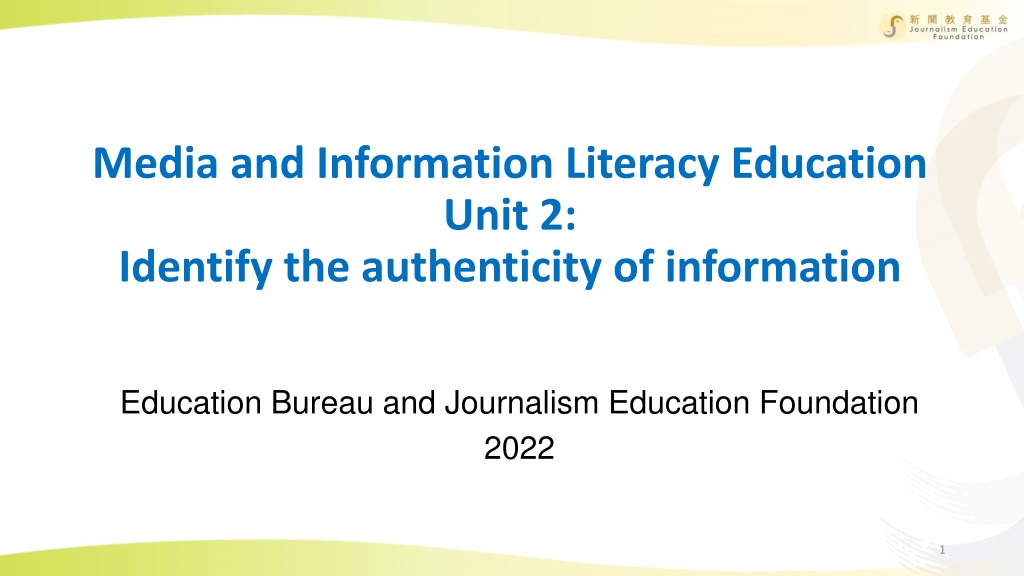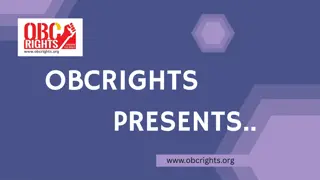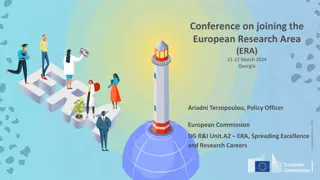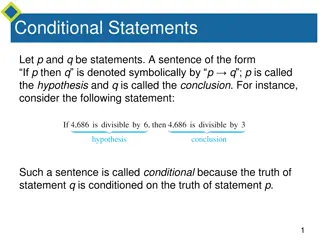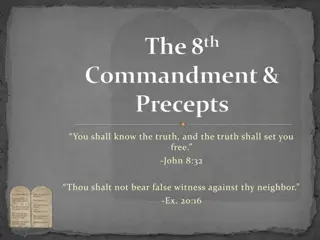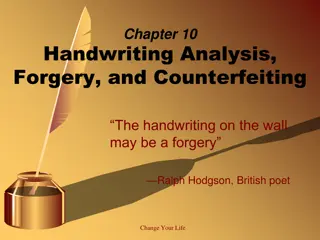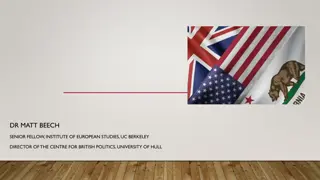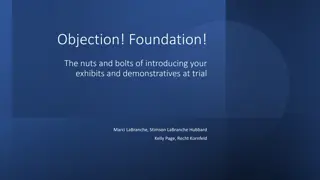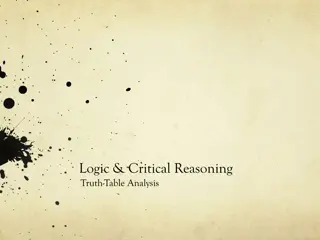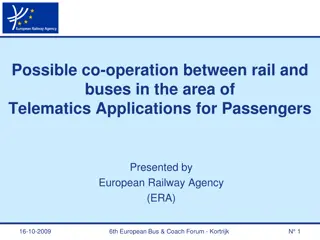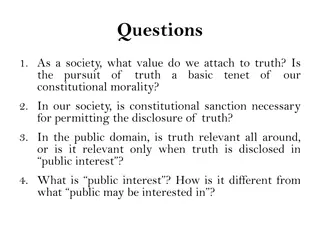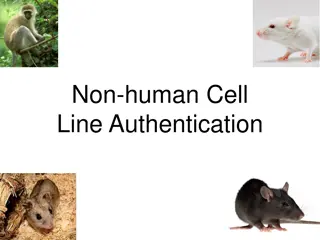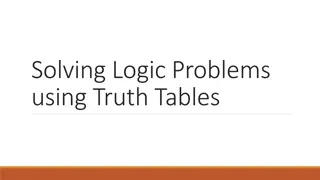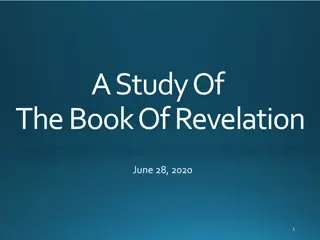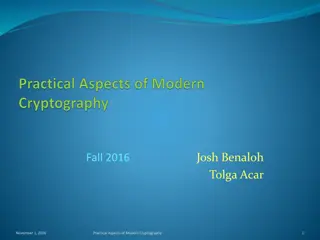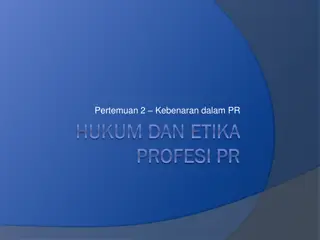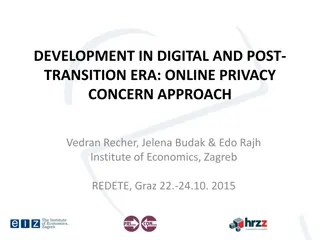Understanding the Importance of Authenticating Information in the Post-Truth Era
In a world plagued by misinformation and fake news, it is crucial for individuals to verify the authenticity of information before believing or sharing it. The spread of disinformation through social media has made it easier for falsehoods to circulate widely, leading to potential negative consequences on both individuals and society. By recognizing the different forms of fake news and understanding its impact, we can equip ourselves to navigate the overwhelming volume of information available online and make informed decisions.
Download Presentation

Please find below an Image/Link to download the presentation.
The content on the website is provided AS IS for your information and personal use only. It may not be sold, licensed, or shared on other websites without obtaining consent from the author. Download presentation by click this link. If you encounter any issues during the download, it is possible that the publisher has removed the file from their server.
E N D
Presentation Transcript
Media and Information Literacy Education Unit 2: Identify the authenticity of information Education Bureau and Journalism Education Foundation 2022 1
Importance of Verifying and Screening Information Information overload in the post-truth era makes misinformation and disinformation prevalent. The popularity of social media allows individuals to express their opinions freely and subjectively. Some people who manipulate public opinions may take the chance to lie and spread rumours. We should equip ourselves with the abilities to verify the authenticity of information. We cannot jump to conclusion based on our first impression of media messages and information. 2
What is Fake News? Fake news: disinformation deliberately fabricated to advertise or mislead the public for certain benefits Five types of fake news: (1) 100% false information, (2) skewed and biased information, (3) pure propaganda, (4) misuse of data, (5) inaccurate and sloppy information or reporting They contain different levels of falsehood and are presented in different ways, but can all mislead the public. 3
What is Fake News? (cont.) What is Fake News? (cont.) In the Internet Era, it is easy to receive different kinds of news and information in large volume, which places people in a situation of information overload . People lack time to consider and verify the authenticity and quality of information. Fake news has a higher chance to spread around. People are more likely to believe this information and this can lead to negative consequences to individuals and society. 4
Impact of Fake News Impact of Fake News Example of fake news: A message circulated among WeChat groups titled WHO announced a new list of secrets for longevity . Among the 20 items, alcohol consumption ranked first. It said that drinking alcohol could have massaging effect on the circulatory system which could not be imitated by any exercise or diet . World Health Organisation (WHO) never announced such list of secrets for longevity. It had in fact listed alcoholic drinks and ethanol therein as carcinogens in 2007 Source: HKBU FactCheck Service (8 December 2021) https://comd.hkbu.edu.hk/factcheckservice/2021/12/08/drinking-alcohol/ 5
Impact of Fake News (cont.) Impact of Fake News (cont.) Undermines the credibility of journalism, even causes rumours and jeopardises the normal function of society. The above fake news report can lead to serious adverse consequences. If alcohol consumption is misunderstood as a secret for longevity, people may be indirectly encouraged to drink more and lead to deterioration of health. This is contrary to WHO s stance against alcohol consumption. 6
How to identify Deepfake? Deepfake: the synthesis or superimposition of existing videos and images on a target image by using the deep learning algorithm of AI to forge the dynamic facial expressions of an individual. This is also known as the face swap technique Apart from its application as special effects in entertainment production, deepfake technology has also been used for fraud. 7
How to identify How to identify Deepfake Deepfake ? ? (cont.) (cont.) To identify deepfake videos, the audience can pay attention to the inconsistencies and unnatural parts in the video For example, the character s pupil colour, spatial distortion on or near the character s face and discrepancies in light and shadow, etc. Deepfake technology is becoming more mature, and it is more difficult to spot with naked eyes. It is necessary to rely on other fact-checking methods in verifying the authenticity of a video. 8
Case Study 1 Case Study 1 Socialistische Partij Anders, a Belgian political party, posted a video of the then US President Donald Trump s speech in May 2018 on Twitter and Facebook. The video had been viewed 20,000 times. It showed Trump continually taunting Belgium for remaining in the Paris Agreement. However, his hair and mouth movements in the video were so unnatural that the video was later exposed to be a fake video produced by Deepfake. Source: BuzzFeed News (20 May 2018) https://www.buzzfeednews.com/article/janelytvynenko/a-belgian-political-party-just-published-a-deepfake-video 9
Using the USER Model To check the authenticity of media messages: Understanding: upon receiving a message, think about its background and meaning Search: trace the source of the message and verify its credibility Evaluation: assess the impact of using the message Response: understand our responsibilities when responding to the message 10
To Identify the Authenticity of Information in Social Media Steps for verification: 1. Check the URL; 2. Check the date of issue; 3. Find out the source of information; 4. Compare the same content from other information sources; 5. Check whether the title and content are consistent; 6. Find out whether the evidence in the information is sufficient and reasonable; 7. Reflect on yourself if you agree with the information based on your personal preference. 11
Fact-checking To identify fake news, students must learn how to perform fact- checking , visit fact-checking organisations and choose credible media. Students should also check a wide range of information sources, learn about and compare the information from different sources. Especially for major news, just like reporters, we should adopt the two-source rule , perform a cross-reference to verify the authenticity and minimise the possibility of being misled. To avoid the echo chamber effect (i.e. an individual obtains highly similar information), we have to receive information and views from different stance and check the authenticity and quality of information. This can give us a more comprehensive and accurate view of the matter. We must always remain cautious and reflective, maintain our objectivity and think critically. 12
Fact-checking (cont.) Search engines for checking the authenticity of online information: HKBU: https://factcheck.hkbu.edu.hk/home/ Annie Lab (HKU Journalism): https://annielab.org 13
Case study 2: Case study 2: Did the Government install face recognition machines to penalise Did the Government install face recognition machines to penalise people who do not follow traffic light instructions? people who do not follow traffic light instructions? A message circulated among WhatsApp groups had claimed that face recognition machines would be installed on roads in Hong Kong to penalise those who did not follow the traffic light instructions. A photo was also attached to the message (please check: https://comd.hkbu.edu.hk/factcheckservice/2021/04/09/face-recognition). The photo showed a pedestrian light on a street in Hong Kong. The black box in red circle in the photo was the suspected "facial recognition machine mentioned in WhatsApp groups. After fact-checking, the Transport Department confirmed that the suspected "facial recognition machine" black box in the picture circulated among WhatsApp groups turned out to be an electronic audible traffic signal, which was a standardised facility to assist visually impaired persons when crossing the road. It was not equipped with videotaping or face recognition functions and was not intended to penalise people who failed to follow traffic light instruction. Source: HKBU FactCheck Service (9 April 2021) https://comd.hkbu.edu.hk/factcheckservice/2021/04/09/face-recognition 14
References References (2017) (2021 4 9 ) https://comd.hkbu.edu.hk/factcheckservice/2021/04/09/face-recognition/ (2021 12 8 ) 2021 10 https://comd.hkbu.edu.hk/factcheckservice/2021/12/08/drinking-alcohol/ BuzzFeed News. (2018, May 20). A Belgian political party is circulating a Trump deepfake video. Retrieved from https://www.buzzfeednews.com/article/janelytvynenko/a-belgian-political-party-just-published-a-deepfake- video Johnson, J. (2017, December 14). The five types of fake news. HuffPost. Retrieved from https://www.huffpost.com/entry/the-five-types-of-fake-ne_b_13609562 Loyola Marymount University Library Workshop (2017). Keepin it real: tips & strategies for evaluating fake news. Retrieved from https://libguides.lmu.edu/c.php?g=595781&p=4121899 Clackamas Community College Library. (n.d.). Disinformation, misinformation, and fake news. Retrieved from https://libguides.clackamas.edu/c.php?g=652128&p=4608563 College of the Redwoods Library. (n.d.). Bias, fake news, hoaxes, & lies. Retrieved from https://redwoods.libguides.com/fakenews/checklists 15
